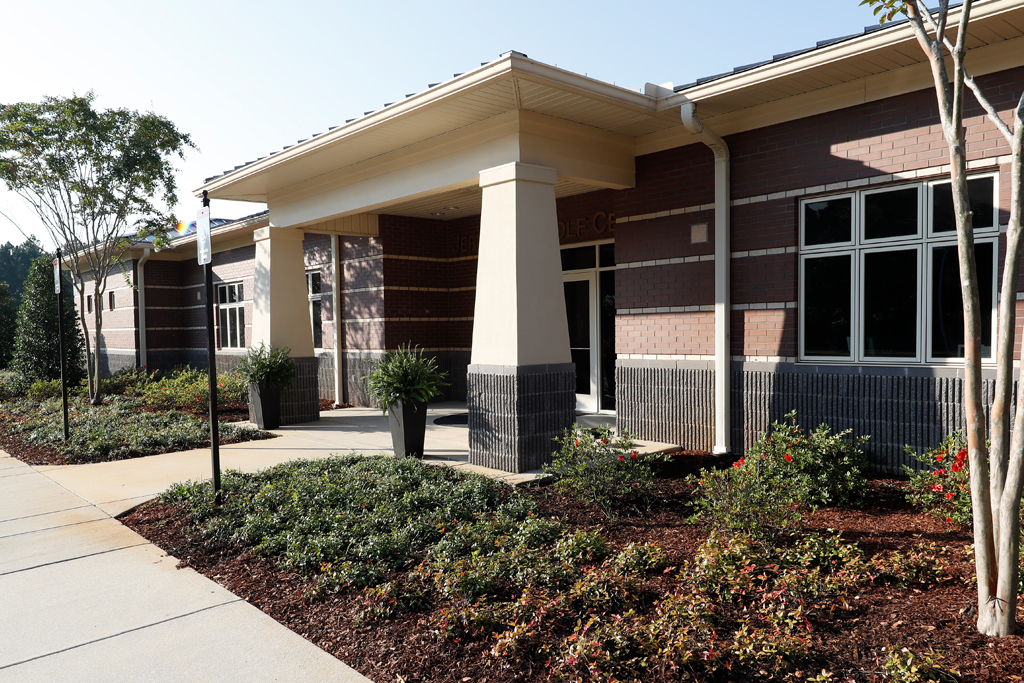When you set out to design a beautiful landscape for your commercial property, there are a lot of variables to consider. You have to think about how the spaces will be used, the feelings you want them to evoke in people, and the way they complement buildings and hardscape.
A key part of achieving your goals for all of those factors is thinking carefully about the plantings you incorporate. It might seem unquestioningly positive to integrate native plantings. And indeed, this concept (which has become something of a buzz phrase in recent years) does represent an idea that benefits the environment. However, there is a difference between plants and flowers that are native to your region and those that will thrive in the specific area you plan to plant them. And this, my friends, is the art of understanding microclimates!
Let’s explore the topic further and learn how microclimates for commercial landscaping can be beneficial and look beautiful.
The Definition of Microclimates

First, you might be wondering: What exactly are microclimates? Merriam-Webster defines a microclimate as “the essentially uniform local climate of a usually small site or habitat.”
In terms of commercial landscaping, you can think of it like this: Outside of a children’s hospital, there is a small park. It contains a bench with trees that provide shade right above it, a patch of flowers next to a stretch of green space to play or picnic, and a swing set at one end. This park is surrounded by concrete—sidewalks and pathways leading back into the building or out to the parking lot—and the soil was disrupted extensively during construction of the complex. On top of all that, its variances in shade and sun exposure will impact plantings, as will the fact that rainfall is distributed differently in a green space enclosed by concrete than it would be in a wild landscape.
So, voilà, you have a microclimate!
The Why for Commercial Landscaping

Now, let’s discuss why this all matters. The answer is simple. If you choose to plant woodland grasses or flowering shrubs that demand endless sun in a shady, concrete-bordered landscaped area, you’re probably going to end up unhappy with the long-term results. At first, the azalea flower bed at the center of the parking lot will look lovely. But in a shorter time than you’d think, it will struggle to thrive even with intensive maintenance.
And that brings us to our next “why.” Maintenance is necessary to any and all landscape architecture. Unless you intend for things to look completely wild, in which case you probably wouldn’t have paid for it to be intentionally designed, you will need to invest in maintaining it.
(As a quick aside, even if you enjoy a wild look, maintenance can help to prevent and identify major problems, like root systems interfering with a building’s structural integrity over time.)
But attending to microclimates from the beginning can reduce maintenance costs incredibly. According to the Environmental Protection Agency, “Maintenance costs [in a landscape that was natively designed] are 80 percent to 90 percent lower than average commercial landscapes.” In the context of highly hardscaped environments, microclimates are the way to achieve that native landscape.
The How of Microclimates for Commercial Landscaping

We think we’ve probably got you on board now! But precisely how can you implement microclimates for commercial landscaping? The first step is to hire an expert team. Certified landscape architects and certified irrigation designers are highly educated on every factor that goes into a microclimate. They will be able to give you the best answers on whether or not a particular planting or design feature will work well. And knowledge isn’t all book smarts!
Experienced, certified specialists have insights from previous projects that might be similar to yours. They can troubleshoot because they’ve seen the trouble!
Still, if you’re trying to get an idea of the things you’ll need to consider, we’ve got a helpful list:
- Sunshine. Consider how it differs even within one green space based on building overhangs, tree canopy, etc.
- Wind. In, for example, a narrow green space between two buildings, extreme winds are a consideration. This will influence landscape architecture choices.
- Water. Are there any natural or man-made bodies of water nearby? How might these cooperate with ideal irrigation plans?
- Soil. It’s always a great idea to test your soil before embarking on a landscape project. This will give you a sense for how well any planting might grow there.
Here is an overarching takeaway from Britannica: “The microclimates of a region are defined by the moisture, temperature, and winds of the atmosphere near the ground, the vegetation, soil, and the latitude, elevation, and season.”
Microclimatic Landscape Design Is the Key to Truly Native Commercial Landscaping

By considering each of these elements of climate within your micro environment, you can create a landscape that simultaneously:
- Looks beautiful
- Takes environmental stress off of surrounding natural areas
- Is less expensive and arduous to maintain
After all, who wouldn’t want that?
If you’re unsure where to start in designing your own locally appropriate, microclimate-informed commercial landscape, we would love to speak with you! Get in touch, at sdana@jerrypatedesign.com.

